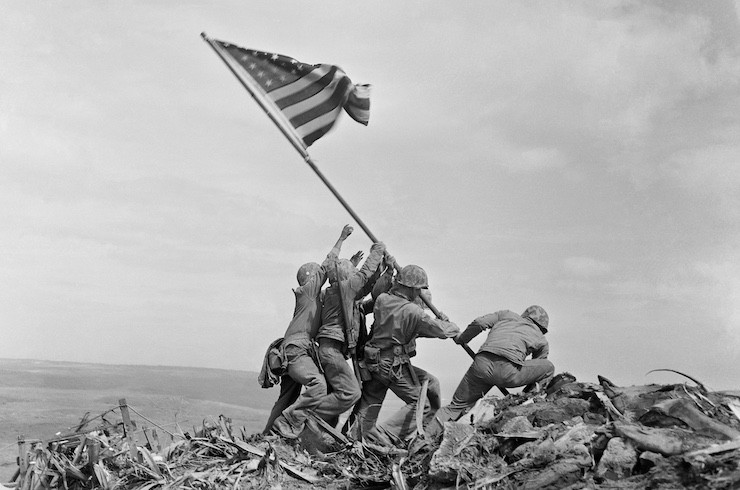Drones To Recover Remains of Fallen WWII Soldiers
 After the losses faced during the attack on Pearl Harbor in 1941, the United States Military needed to rebuild its airbase strongholds. One such mission would go on to be known as Operation Forager, a strategy that would see the US take control over key airbases to defeat Imperial Japan. Between July 21 through August 10, 1944, the United States Military Forces carried out the Battle of Guam which proved vital in the success of Operation Forager.
After the losses faced during the attack on Pearl Harbor in 1941, the United States Military needed to rebuild its airbase strongholds. One such mission would go on to be known as Operation Forager, a strategy that would see the US take control over key airbases to defeat Imperial Japan. Between July 21 through August 10, 1944, the United States Military Forces carried out the Battle of Guam which proved vital in the success of Operation Forager.
The first round of attack was carried out by Naval Admiral Raymond A. Spruance and the US Fifth Fleet, followed by the Navy’s Southern Attack Force under the direction of Vice Admiral Richard L. Conolly. Once positions had been secured by the Navy, Lieutenant General Holland M. Smith orchestrated thousands of US Marines in the capture of Guam. The Battle of Guam eliminated Japan’s Naval air power in the region, allowing the US to position themselves within striking distance of Japan’s domestic bases with their new bomber, the Boeing B-29 Superfortress.
And while the Battle of Guam was considered a military success, a great many lives were lost over the nearly three-week-long battle. A reported 1,700 American and 18,000 Japanese soldiers died along with many more who suffered injuries. Even more tragic is the fact that many of the fallen soldiers were never returned to their families, as often happened during WWII. Now, 80 years later, two professors from New York’s Binghamton University have been tasked with using drone technology to find the remains of those who fell during the Battle of Guam.
Binghamton’s Professor of Anthropology Carl Lipo and Associate Professor of Geography Thomas Pingel both specialize in using drone-enabled LiDAR technology to discover the secrets of the land and people of times gone by. As explained on the USGS website, “Light Detection and Ranging (LiDAR) is a technology used to create high-resolution models of ground elevation with a vertical accuracy of 10 centimeters (4 inches). Lidar equipment, which includes a laser scanner, a Global Positioning System (GPS), and an Inertial Navigation System (INS), is typically mounted on a small aircraft. The laser scanner transmits brief pulses of light to the ground surface. Those pulses are reflected or scattered back and their travel time is used to calculate the distance between the laser scanner and the ground.”
Because of their affordability, ease of use, and accuracy, drones have become the go-to means of utilizing LiDAR systems. The drones are flown over areas of interest, many of which are inaccessible to people, collecting a wide range of data. Besides the LiDAR information, the drones provide researchers with real-time video, GPS, and data on atmospheric conditions. For the project, Professors Lipo and Pingel were contacted by the Defense POW/MIA Accounting Agency (DPAA), a branch of the US Department of Defense that is committed to recovering missing US prisoners of war and those missing in action from past conflicts around the world. The partnership also involved support from the International Archaeological Research Institute (IARI).
The team first used the drone LiDAR technology to research Guadalcanal in the Solomon Islands, where a mission similar to the Battle of Guam took place from August 7, 1942, to February 9, 1943. Upon the success in the Solomon Islands, the research team was excited to once again see what they could find. However, a few changes had to be made for the Guam mission.
The first issue was outfitting a larger, more powerful drone with large lithium-ion batteries that had to be shipped to Guam ahead of time. The next step was to secure the necessary waivers to fly the drone over restricted areas, which included Guam International Airport, a naval base, and a protected historic park. Once everything was in order, it was time to start flying and collecting data.
“Our goal was to generate high-resolution topography so that we could reconstruct the detailed landscape which people had to go up,” Professor Lipo explained. “Most of the areas where people are lost are remote settings with rough terrain and jungle.” Making a drone the perfect device for using LiDAR technology. “We flew all day and crunched numbers all night, and went back at it again the next day,” Professor Pingel said.
After more than two dozen drone flights, the drones allowed the professors to capture 3 billion data points. Now this data needs to be processed and compared with historical data to create a detailed map of human movement throughout the Battle of Guam. Once compiled, the DPAA can use the information to develop a recovery plan for MIA soldiers.
|